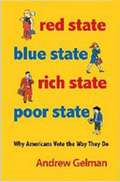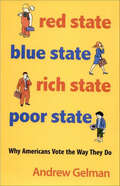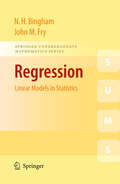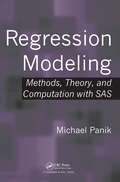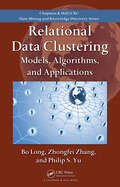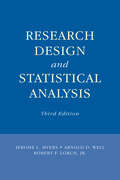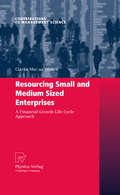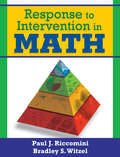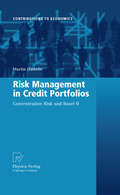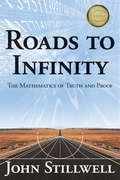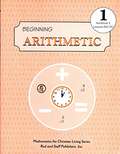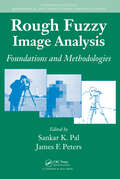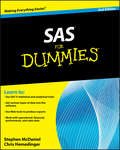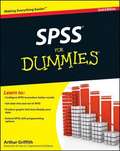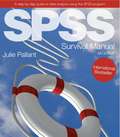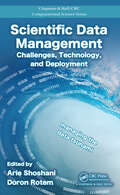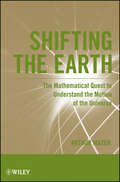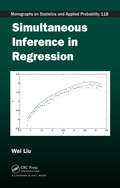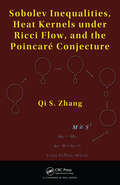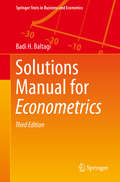- Table View
- List View
Red State, Blue State, Rich State, Poor State: Why Americans Vote the Way They Do
by Jeronimo Cortina Andrew Gelman David Park Boris ShorOn the night of the 2000 presidential election, Americans sat riveted in front of their televisions as polling results divided the nation's map into red and blue states. Since then the color divide has become a symbol of a culture war that thrives on stereotypes--pickup-driving red-state Republicans who vote based on God, guns, and gays; and elitist, latte-sipping blue-state Democrats who are woefully out of touch with heartland values. Red State, Blue State, Rich State, Poor Statedebunks these and other political myths. With wit and prodigious number crunching, Andrew Gelman gets to the bottom of why Democrats win elections in wealthy states while Republicans get the votes of richer voters, how the two parties have become ideologically polarized, and other issues. Gelman uses eye-opening, easy-to-read graphics to unravel the mystifying patterns of recent voting, and in doing so paints a vivid portrait of the regional differences that drive American politics. He demonstrates in the plainest possible terms how the real culture war is being waged among affluent Democrats and Republicans, not between the haves and have-nots; how religion matters for higher-income voters; how the rich-poor divide is greater in red not blue states--and much more. Red State, Blue State, Rich State, Poor Stateis a must-read for anyone seeking to make sense of today's fractured American political landscape. Myths and facts about the red and the blue:Myth: The rich vote based on economics, the poor vote "God, guns, and gays. " Fact: Church attendance predicts Republican voting much more among rich than poor. Myth: A political divide exists between working-class "red America" and rich "blue America. " Fact: Within any state, more rich people vote Republican. The real divide is between higher-income voters in red and blue states. Myth: Rich people vote for the Democrats. Fact: George W. Bush won more than 60 percent of high-income voters. Myth: Religion is particularly divisive in American politics. Fact: Religious and secular voters differ no more in America than in France, Germany, Sweden, and many other European countries.
Red State, Blue State, Rich State, Poor State: Why Americans Vote the Way They Do
by Andrew GelmanOn the night of the 2000 presidential election, Americans watched on television as polling results divided the nation's map into red and blue states. Since then the color divide has become symbolic of a culture war that thrives on stereotypes--pickup-driving red-state Republicans who vote based on God, guns, and gays; and elitist blue-state Democrats woefully out of touch with heartland values. With wit and prodigious number crunching, Andrew Gelman debunks these and other political myths. This expanded edition includes new data and easy-to-read graphics explaining the 2008 election. Red State, Blue State, Rich State, Poor State is a must-read for anyone seeking to make sense of today's fractured political landscape.
Regression
by John M. Fry N. H. BinghamRegression is the branch of Statistics in which a dependent variable of interest is modelled as a linear combination of one or more predictor variables, together with a random error. The subject is inherently two- or higher- dimensional, thus an understanding of Statistics in one dimension is essential. Regression: Linear Models in Statistics fills the gap between introductory statistical theory and more specialist sources of information. In doing so, it provides the reader with a number of worked examples, and exercises with full solutions. The book begins with simple linear regression (one predictor variable), and analysis of variance (ANOVA), and then further explores the area through inclusion of topics such as multiple linear regression (several predictor variables) and analysis of covariance (ANCOVA). The book concludes with special topics such as non-parametric regression and mixed models, time series, spatial processes and design of experiments. Aimed at 2nd and 3rd year undergraduates studying Statistics, Regression: Linear Models in Statistics requires a basic knowledge of (one-dimensional) Statistics, as well as Probability and standard Linear Algebra. Possible companions include John Haigh's Probability Models, and T. S. Blyth & E.F. Robertsons' Basic Linear Algebra and Further Linear Algebra.
Regression Modeling with Actuarial and Financial Applications
by Edward W. FreesStatistical techniques can be used to address new situations. This is important in a rapidly evolving risk management and financial world. Analysts with a strong statistical background understand that a large data set can represent a treasure trove of information to be mined and can yield a strong competitive advantage. This book provides budding actuaries and financial analysts with a foundation in multiple regression and time series. Readers will learn about these statistical techniques using data on the demand for insurance, lottery sales, foreign exchange rates, and other applications. Although no specific knowledge of risk management or finance is presumed, the approach introduces applications in which statistical techniques can be used to analyze real data of interest. In addition to the fundamentals, this book describes several advanced statistical topics that are particularly relevant to actuarial and financial practice, including the analysis of longitudinal, two-part (frequency/severity), and fat-tailed data. Datasets with detailed descriptions, sample statistical software scripts in "R" and "SAS," and tips on writing a statistical report, including sample projects, can be found on the book's Web site: http://research. bus. wisc. edu/RegActuaries.
Regression Modeling: Methods, Theory, and Computation with SAS
by Michael PanikRegression Modeling: Methods, Theory, and Computation with SAS provides an introduction to a diverse assortment of regression techniques using SAS to solve a wide variety of regression problems. The author fully documents the SAS programs and thoroughly explains the output produced by the programs.The text presents the popular ordinary least square
Relational Data Clustering: Models, Algorithms, and Applications
by Philip S. Yu Zhongfei Zhang Bo LongA culmination of the authors' years of extensive research on this topic, Relational Data Clustering: Models, Algorithms, and Applications addresses the fundamentals and applications of relational data clustering. It describes theoretic models and algorithms and, through examples, shows how to apply these models and algorithms to solve real-world problems.After defining the field, the book introduces different types of model formulations for relational data clustering, presents various algorithms for the corresponding models, and demonstrates applications of the models and algorithms through extensive experimental results. The authors cover six topics of relational data clustering:Clustering on bi-type heterogeneous relational dataMulti-type heterogeneous relational data Homogeneous relational data clusteringClustering on the most general case of relational dataIndividual relational clustering frameworkRecent research on evolutionary clusteringThis book focuses on both practical algorithm derivation and theoretical framework construction for relational data clustering. It provides a complete, self-contained introduction to advances in the field.
Representation Theory of the Symmetric Groups
by Tullio Ceccherini-Silberstein Fabio Scarabotti Filippo TolliA self-contained introduction to the representation theory of the symmetric groups, including an exhaustive exposition of the Okounkov Vershik approach.
Research Design and Statistical Analysis: Third Edition (Inquiry And Pedagogy Across Diverse Contexts Ser.)
by Jerome L. Myers Arnold D. Well Robert F. Lorch JrResearch Design and Statistical Analysis provides comprehensive coverage of the design principles and statistical concepts necessary to make sense of real data. The book’s goal is to provide a strong conceptual foundation to enable readers to generalize concepts to new research situations. Emphasis is placed on the underlying logic and assumptions of the analysis and what it tells the researcher, the limitations of the analysis, and the consequences of violating assumptions. Sampling, design efficiency, and statistical models are emphasized throughout. As per APA recommendations, emphasis is also placed on data exploration, effect size measures, confidence intervals, and using power analyses to determine sample size. "Real-world" data sets are used to illustrate data exploration, analysis, and interpretation. The book offers a rare blend of the underlying statistical assumptions, the consequences of their violations, and practical advice on dealing with them. Changes in the New Edition: Each section of the book concludes with a chapter that provides an integrated example of how to apply the concepts and procedures covered in the chapters of the section. In addition, the advantages and disadvantages of alternative designs are discussed. A new chapter (1) reviews the major steps in planning and executing a study, and the implications of those decisions for subsequent analyses and interpretations. A new chapter (13) compares experimental designs to reinforce the connection between design and analysis and to help readers achieve the most efficient research study. A new chapter (27) on common errors in data analysis and interpretation. Increased emphasis on power analyses to determine sample size using the G*Power 3 program. Many new data sets and problems. More examples of the use of SPSS (PASW) Version 17, although the analyses exemplified are readily carried out by any of the major statistical software packages. A companion website with the data used in the text and the exercises in SPSS and Excel formats; SPSS syntax files for performing analyses; extra material on logistic and multiple regression; technical notes that develop some of the formulas; and a solutions manual and the text figures and tables for instructors only. Part 1 reviews research planning, data exploration, and basic concepts in statistics including sampling, hypothesis testing, measures of effect size, estimators, and confidence intervals. Part 2 presents between-subject designs. The statistical models underlying the analysis of variance for these designs are emphasized, along with the role of expected mean squares in estimating effects of variables, the interpretation of nteractions, and procedures for testing contrasts and controlling error rates. Part 3 focuses on repeated-measures designs and considers the advantages and disadvantages of different mixed designs. Part 4 presents detailed coverage of correlation and bivariate and multiple regression with emphasis on interpretation and common errors, and discusses the usefulness and limitations of these procedures as tools for prediction and for developing theory. This is one of the few books with coverage sufficient for a 2-semester course sequence in experimental design and statistics as taught in psychology, education, and other behavioral, social, and health sciences. Incorporating the analyses of both experimental and observational data provides continuity of concepts and notation. Prerequisites include courses on basic research methods and statistics. The book is also an excellent resource for practicing researchers.
Resourcing Small and Medium Sized Enterprises: A Financial Growth Life Cycle Approach
by Ciarán Mac an BhairdIn a world of increasing financial uncertainty and growing unemployment, the macroeconomic contribution of SMEs is more important than ever. Development of a vibrant, sustainable small firm sector is dependent on sufficient resourcing of SMEs, particularly adequate capitalisation. This book provides a timely examination of SME financing and determinants of capital structure. A special feature of this book is the novel methodological approach adopted, providing an innovative perspective on SME financing. Analysis of stated financing preferences and objectives of SME owners is combined with results of statistical analysis of firm characteristics in exploring holistic explanations for observed capital structures. The uniqueness of this approach is in the contribution of data on financing preferences to supplement and contextualise results of bivariate and multivariate statistical tests. This methodology extends the SME literature, and is of interest to academics, researchers, practitioners and policy makers.
Response to Intervention in Math
by Bradley S. Witzel Paul J. RiccominiBoost academic achievement for all students in your mathematics classroom! This timely resource leads the way in applying RTI to mathematics instruction. The authors describe how the three tiers can be implemented in specific math areas and illustrate RTI procedures through case studies. Aligned with the NMAP final report and IES practice guide, this book includes: Intervention strategies for number sense, fractions, problem solving, and more Procedures for teaching math using systematic and explicit instruction for assessment, instructional planning, and evaluation Essential components to consider when designing and implementing RTI in mathematics
Risk Management in Credit Portfolios: Concentration Risk and Basel II
by Martin HibbelnRisk concentrations play a crucial role for the survival of individual banks and for the stability of the whole banking system. Thus, it is important from an economical and a regulatory perspective to properly measure and manage these concentrations. In this book, the impact of credit concentrations on portfolio risk is analyzed for different portfolio types and it is determined, in which cases the influence of concentration risk has to be taken into account. Furthermore, some models for the measurement of concentration risk are modified to be consistent with Basel II and their performance is compared. Beyond that, this book integrates economical and regulatory aspects of concentration risk and seeks to provide a systematic way to get familiar with the topic of concentration risk from the basics of credit risk modeling to present research in the measurement and management of credit risk concentrations.
Roads to Infinity: The Mathematics of Truth and Proof (AK Peters/CRC Recreational Mathematics Series)
by John StillwellWinner of a CHOICE Outstanding Academic Title Award for 2011!This book offers an introduction to modern ideas about infinity and their implications for mathematics. It unifies ideas from set theory and mathematical logic, and traces their effects on mainstream mathematical topics of today, such as number theory and combinatorics. The treatment is h
Rod & Staff Grade 1 Math
by Rod StaffThe Rod & Staff Grade 1 Math Student Book (Part 2) continues with Lessons 86-170. Like the Rod & Staff Grade 1 Math Student Book (Part 1), this book continues the mastery approach method when teaching mathematics.
Rough Fuzzy Image Analysis: Foundations and Methodologies (Chapman & Hall/CRC Mathematical and Computational Imaging Sciences Series)
by Sankar K. Pal James F. PetersFuzzy sets, near sets, and rough sets are useful and important stepping stones in a variety of approaches to image analysis. These three types of sets and their various hybridizations provide powerful frameworks for image analysis. Emphasizing the utility of fuzzy, near, and rough sets in image analysis, Rough Fuzzy Image Analysis: Foundations and
Rough Sets
by Dominik Ślęzak Georg Peters Yiyu Yao Richard Weber Guoyin Wang Víctor Flores Fernando Gomide Andrzej Janusz Claudio Meneses Duoqian MiaoVolume XII of the Transactions on Rough Sets (TRS) includes articles that are part of a special issue on Rough Set Structuring of Knowledge. These articles are extended versions of papers accepted for presentation at the Rough Set and Knowledge Technology Conference (RSKT 2008) organized in Chengdu, China, in May 2008. In fact, this conference did not take place because of the earthquake that dramatically hit the Chengdu province just before the event. The editors selected some papers accepted for RSKT 2008 and invited their authors to submit extended versions to this issue. The 11 submissions received after this invitation were sent to reviewers and, ?nally, 8 papers were accepted for publication in the special issue. The editors of the special issue are particularly grateful to all the authors of submitted papers, and to the editors of Transactions on Rough Sets, JamesF. Peters and Andrzej Skowron, who provided friendly and valuable assistance in the reviewing process. Special thanks are due to the following reviewers: Mohua Banerjee, Anna Gomolinsk a, Ryszard Janicki, Julia Johnson, Maneesh Joshi, Jusheng Mi, Sonajharia Minz, Sushmita Mitra, Tuan Trung Nguyen, Georg Pe- ters, Andrzej Skowron, Genlou Sun, Marcin Szczuka, Dominik Sl, ezak, Guoyin Wang, Hai Wang, Marcin Wolski, Haiyi Zhang, Yan Zhao, William Zhu. Their laudable e?orts made possible a careful selection and revision of submitted manuscripts. "
SAS For Dummies
by Chris Hemedinger Stephen McdanielThe fun and easy way to learn to use this leading business intelligence toolWritten by an author team who is directly involved with SAS, this easy-to-follow guide is fully updated for the latest release of SAS and covers just what you need to put this popular software to work in your business. SAS allows any business or enterprise to improve data delivery, analysis, reporting, movement across a company, data mining, forecasting, statistical analysis, and more. SAS For Dummies, 2nd Edition gives you the necessary background on what SAS can do for you and explains how to use the Enterprise Guide.SAS provides statistical and data analysis tools to help you deal with all kinds of data: operational, financial, performance, and morePlaces special emphasis on Enterprise Guide and other analytical tools, covering all commonly used featuresCovers all commonly used features and shows you the practical applications you can put to work in your businessExplores how to get various types of data into the software and how to work with databasesCovers producing reports and Web reporting tools, analytics, macros, and working with your dataIn the easy-to-follow, no-nonsense For Dummies format, SAS For Dummies gives you the knowledge and the confidence to get SAS working for your organization.Note: CD-ROM/DVD and other supplementary materials are not included as part of eBook file.
SPSS For Dummies, 2nd Edtion
by Arthur GriffithThe fun and friendly guide to the world's leading statistical software Predictive Analysis Software (PASW), formerly SPSS software, is the leading statistical software used by commerical, government, and academic organizations around the world to solve business and research problems. It allows you to quickly and easily discover new insights from data, test hypotheses, and build powerful predictive models. PASW Statistics For Dummies covers everything you need to know to get up and running with this efficient and practical software. PASW Statistics is the leading statistical software used to analyze data and create predictive models; it is used by business, academic, and government entities worldwide This guide explains how to work with automatic codebook generation and customize the variable view Walks you through the rounding method that is used in all calculations and explains using predictive analysis Shows how to maximize your use of graph templates, and much more Even if you have little or no statistical or mathematical background, PASW Statistics For Dummies will show you how to generate statistical support and decision-making information quickly and easily. Note: CD-ROM/DVD and other supplementary materials are not included as part of eBook file.
SPSS Survival Manual
by Julie PallantThis guide book provides a reference source to enable students not only to navigate but understand statistical analysis performed in and output produced by SPSS.
Scientific Data Management: Challenges, Technology, and Deployment
by Arie Shoshani Doron RotemDealing with the volume, complexity, and diversity of data currently being generated by scientific experiments and simulations often causes scientists to waste productive time. Scientific Data Management: Challenges, Technology, and Deployment describes cutting-edge technologies and solutions for managing and analyzing vast amounts of data, helping
Shifting the Earth
by Arthur MazerDiscover how mathematics and science have propelled history From Ancient Greece to the Enlightenment and then on to modern times, Shifting the Earth: The Mathematical Quest to Understand the Motion of the Universe takes readers on a journey motivated by the desire to understand the universe and the motion of the heavens. The author presents a thought-provoking depiction of the sociopolitical environment in which some of the most prominent scientists in history lived and then provides a mathematical account of their contributions. From Eudoxus to Einstein, this fascinating book describes how, beginning in ancient times, pioneers in the sciences and mathematics have dramatically changed our vision of who we are as well as our place in the universe. Readers will discover how Ptolemy's geocentric model evolved into Kepler's heliocentric model, with Copernicus as the critical intermediary. The author explains how one scientific breakthrough set the stage for the next one, and he also places the scientists and their discoveries within the context of history, including: Archimedes, Apollonius, and the Punic Wars Ptolemy and the rise of Christianity Copernicus and the Renaissance Kepler and the Counter-Reformation Newton and the Enlightenment Einstein and the detonation of the atom bomb Each chapter presents the work of a single scientist or mathematician, building on the previous chapters to demonstrate the evolutionary process of discovery. Chapters begin with a narrative section and conclude with a mathematical presentation of one of the scientist's original works. Most of these mathematical presentations, including the section on Einstein's special relativity, are accessible using only basic mathematics; however, readers can skip the mathematical sections and still follow the evolution of science and mathematics. Shifting the Earth is an excellent book for anyone interested in the history of mathematics and how the quest to understand the motion of the heavens has influenced the broader history of humankind.
Simultaneous Inference in Regression (Chapman & Hall/CRC Monographs on Statistics and Applied Probability)
by Wei LiuSimultaneous confidence bands enable more intuitive and detailed inference of regression analysis than the standard inferential methods of parameter estimation and hypothesis testing. Simultaneous Inference in Regression provides a thorough overview of the construction methods and applications of simultaneous confidence bands for various inferentia
Single Variable Calculus: Concepts and Contexts
by James StewartStewart's CALCULUS: CONCEPTS AND CONTEXTS, FOURTH EDITION offers a streamlined approach to teaching calculus, focusing on major concepts and supporting those with precise definitions, patient explanations, and carefully graded problems. CALCULUS: CONCEPTS AND CONTEXTS is highly regarded because this text offers a balance of theory and conceptual work to satisfy more progressive programs as well as those who are more comfortable teaching in a more traditional fashion. Each title is just one component in a comprehensive calculus course program that carefully integrates and coordinates print, media, and technology products for successful teaching and learning.
Single Variable Calculus: Concepts and Contexts
by James StewartStewart's CALCULUS: CONCEPTS AND CONTEXTS, FOURTH EDITION offers a streamlined approach to teaching calculus, focusing on major concepts and supporting those with precise definitions, patient explanations, and carefully graded problems. CALCULUS: CONCEPTS AND CONTEXTS is highly regarded because this text offers a balance of theory and conceptual work to satisfy more progressive programs as well as those who are more comfortable teaching in a more traditional fashion. Each title is just one component in a comprehensive calculus course program that carefully integrates and coordinates print, media, and technology products for successful teaching and learning.
Sobolev Inequalities, Heat Kernels under Ricci Flow, and the Poincare Conjecture
by Qi S. ZhangFocusing on Sobolev inequalities and their applications to analysis on manifolds and Ricci flow, Sobolev Inequalities, Heat Kernels under Ricci Flow, and the Poincare Conjecture introduces the field of analysis on Riemann manifolds and uses the tools of Sobolev imbedding and heat kernel estimates to study Ricci flows, especially with surgeries. The
Solutions Manual for Econometrics
by Badi H. BaltagiThis Second Edition updates the Solutions Manual for Econometrics to match the fourth edition of the Econometrics textbook. It corrects typos in the previous edition and adds problems and solutions using latest software versions of Stata and EViews. Special features include empirical examples using EViews and Stata. The book offers rigourous proofs and treatment of difficult econometrics concepts in a simple and clear way, and it provides the reader with both applied and theoretical econometrics problems along with their solutions.
